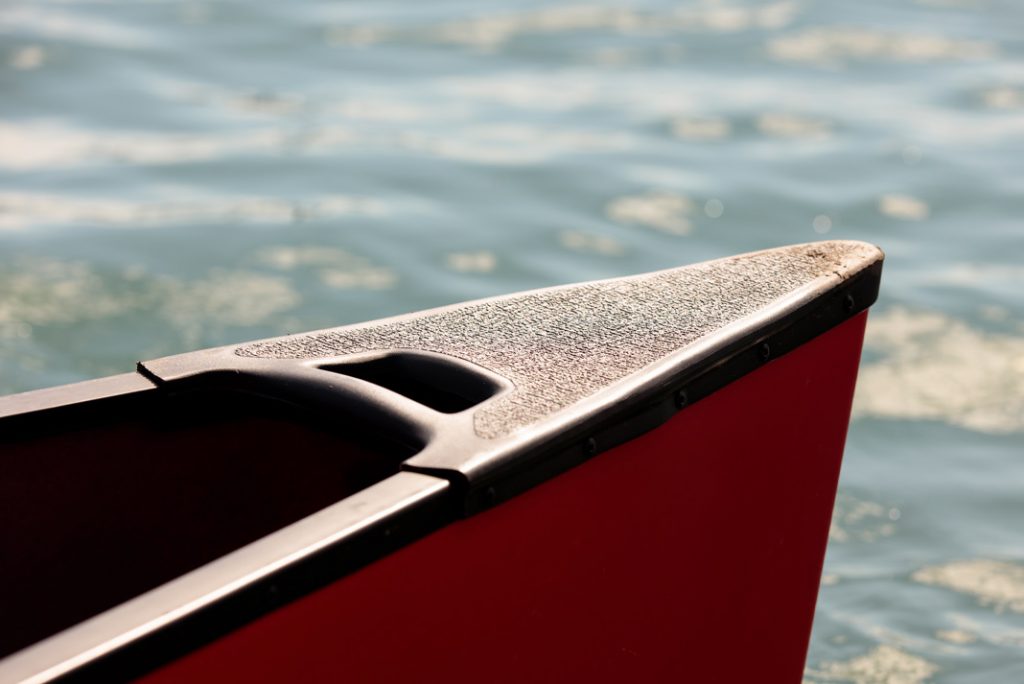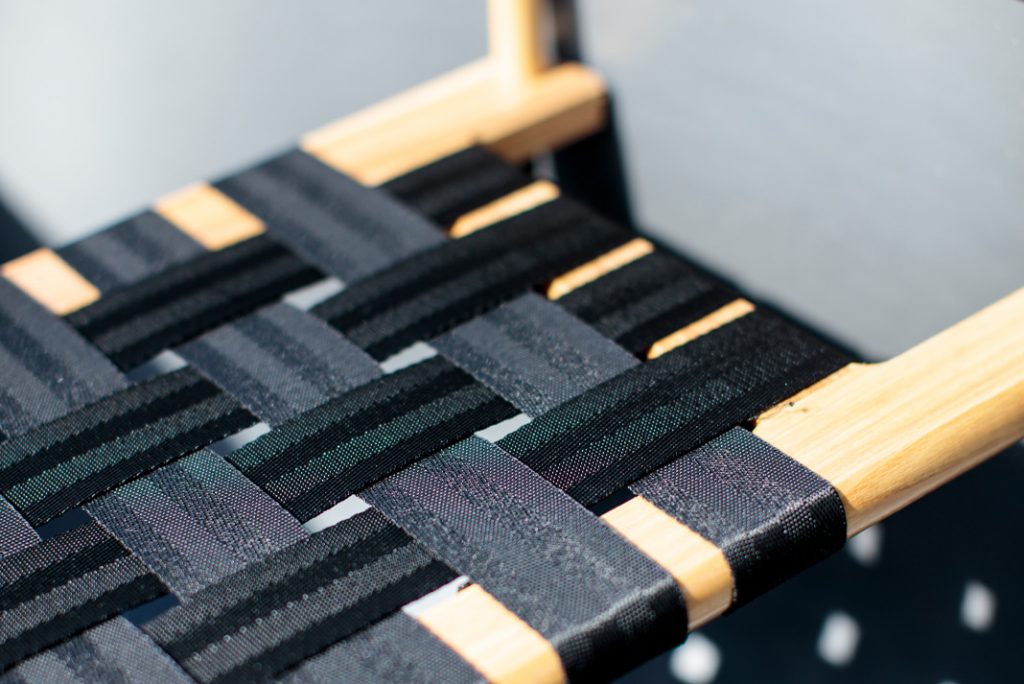My day trip paddling Old Town’s Penobscot 164 across the city’s outer harbor to a nearby park was a typical outing for this design. Billed as Old Town’s “sleek, nimble tripping canoe for solo or tandem paddlers,” this all-around touring canoe is large enough for most overnight trips yet short enough to serve as a solo tripper for skilled paddlers. It’s also perfect for spontaneous day trips like mine.
Old Town Penobscot 164 Specs
Length: 16’4”
Width: 37.5”
Weight: 75 lbs
Capacity: 1,250 lbs
MSRP: $1,200 USD
www.oldtowncanoe.com
Slick in more ways than one
A digital camera and a daypack of snacks were about all my friend and I carried, making the Penob’s roomy, shallow-arch hull seem conspicuously empty. Loading up with packs for a weekend or a week would surely be better, if only because it would have given our feet something to brace against.
The early season waters of the lake were frigid, so I occasionally dropped to my knees for security, although there was really no need since the rounded cross-section gives the hull loads of secondary stability. Then I would find myself gradually sliding forward until my butt fell off the seat, and I’d have to sit up and splay my legs out against the gunwales to hold my position.
“This boat is, um…slick,” I remarked to my friend.
“You know I was just going to say the same thing!” he laughed. “My feet keep sliding around.”
Old Town continues its line of tough and affordable poly canoes
The Penobscot 164 has been around for nearly as long as I have. First manufactured in 1980 as a Royalex canoe, the Penobscot 16, was then released in a polyethylene version, which we all know as the Discovery 164.

For decades, Old Town would establish a design in Royalex and then remake it in a much more budget-friendly—albeit heavier—polyethylene version. Now Royalex is no more and polyethylene is the only material Old Town uses.
The poly version has been renamed the Penobscot 164 and the Discovery moniker has been passed along to the company’s line of flatter-bottomed recreational canoes. The company has said it won’t be building with any other materials for now, such as the T-Formex Esquif Canoes has marketed to replace Royalex.
Polyethylene has heft, to be sure. The Penobscot 164 is advertised at 75 pounds; our loaner tipped the bathroom scale at 79. Some similar designs manufactured in T-Formex are lighter, but not all. Esquif’s Prospecteur 16 is a svelte 65 pounds, but Mad River’s Explorer 16 logs in at 77. Both canoes are four inches shorter. And a glance at the $1,200 price tag makes Old Town’s appeal crystal clear and affirms the company’s choice to stick with its proven polyethylene.
Sales rep Scott Phillips notes that Old Town has been making three-layer polyethylene canoes for about a quarter century. The middle layer is a foam core, very similar to Royalex.
“There’s a lot of polyethylene canoes that are a single layer or two-layer without the foam core, so it’s not as stiff. Most companies aren’t building them in three layers.” The outer layer is also thicker and more abrasion-resistant than Royalex was, says Phillips, making the material very popular with outfitters. Old Town guarantees its hulls and decks for life.
The three-layer, foam core construction adds rigidity, allowing the Penobscot 164 to hold its graceful, curved form without the support of ribs or any other internal stiffeners one might see in cheaper or thinner plastic canoes. The Penobscot’s smooth hull makes it super easy to load—there’s nothing for a pack or barrel to get hung up on. Additional rigidity comes from the plastic-covered aluminum gunwales, which are offset aesthetically by the more traditional ash wood seats and thwarts.
The Penobscot 164 is at home on glassy lakes and in rougher waters
Out on the open lake, it occurred to my friend and me that we had never before canoed together. But it didn’t matter. We fell into a comfortable rhythm and the stiff cross-breeze and choppy waves didn’t bother us a bit. Even without its one-ton-rated load, the 164 plied a true course for our destination beach.
Our journey was briefly interrupted by a harbor patrol boat cutting across our right-of-way with a friendly wave and a two-foot wake. Again, I took to my knees. The Penobscot is an interesting combination of a relatively flat rocker and plumb ends, to maximize waterline length for speed and tracking without the need for a keel, according to Old Town. Its rounded cross section makes it capable in whitewater and amenable to being put on edge for quick turning for catching eddies, or trying to avoid being swamped by motor boats. A couple of quick draws spun the canoe head-on to the coming wave train, and we bobbed through without shipping a drop.
I use the Penobscot in most of my paddling because it’s just such a great all-around design, whether it’s out for a day cruise or going on a short trip
Scott Phillips confirmed in conversation what I felt in those waves and read in many five-star online reviews: while the Penobscot 164 is easy to paddle and tracks straight for long distance paddling, it’s also versatile and capable in whitewater up to Class III.
“I use the Penobscot in most of my paddling because it’s just such a great all-around design, whether it’s out for a day cruise or going on a short trip,” said Phillips. “Heck, I’ve even used them on moose hunts before!” For a multi-day expedition, I might have selected its larger sibling, the Penobscot 174, which is the longest canoe Old Town makes nowadays.
My friend and I ended our paddle with a rapid acceleration and the traditional call of “Ramming speed!” that heralds the boisterous arrival of any plastic or metal canoe upon an untracked beach. The Penobscot 164 skidded to a stop across the sand and gravel without a scratch.
With a time-tested, all-around design, a durable and proven material, and an accessible price point, the Penobscot 164 is indeed a slick offering.
This article was first published in Issue 58 of Paddling Magazine. Subscribe to Paddling Magazine’s print and digital editions, or browse the archives.
From flatwater tripping to running class III rivers, the versatile Penobscot can do it all. | Feature Photo: Joel Clifton









